Game Review: Rhapsody II: Ballad of The Little Princess (Rhapsody: Marl Kingdom Chronicles)8/28/2023 By Manuel Players: 1 Platforms: Nintendo Switch, PlayStation 5, PC Rhapsody: Marl Kingdom Chronicles is a new collection from NIS that rounds out the Rhapsody series with the two sequels we never got in the US. The two-game package includes Rhapsody II: Ballad of the Little Princess, which follows Cornet's daughter Kururu, and Rhapsody III: Memories of Marl Kingdom, which features five smaller stories that round out and conclude various story aspects of the first two games. These games originally released on the PlayStation and PlayStation 2 respectively and they're now arriving on the PS5, Switch, and PC. Was the long wait for two more musical RPGs worth it? Well, we're going to be answering that very question right now by taking the initiative and diving into each game separately, starting with Rhapsody II. Also, if you're curious as to where the first game is, it's found on the NIS Classics Volume 3 collection. Our review of that game can be found HERE. Anyhow, let's get into the adventures of Princess Pumpkin Pants! Rhapsody II: Ballad of the Little Princess takes place fourteen years after the events of Rhapsody: A Musical Adventure. Cornet and Ferdinand are ruling the Marl Kingdom, and their daughter Kururu is a rebellious free spirit that has similar puppet controlling powers as her mom. Being trapped in a castle isn't exactly Kururu's idea of fun so each chapter sees her leaving the castle, usually by sneaking out, in the hopes of finding both fun and maybe even her dream prince. Joining Kururu in her journeys is her best friend Crea Rosenqueen, daughter of Etoile who was Cornet's friendly rival from the first game. Early on the duo find themselves in the nearby Wonder Woods where a dragon suddenly attacks them. Rather than becoming a dragon's lunch, they are saved by a mysterious swordsman named Cello. Being her mother's child, Kururu instantly falls in love with her newly found "prince" and ultimately goes on yet more adventures, this time joined by Cello, to stop the machinations of the newly introduced Akurjo Family, equally evil rivals of the first game's Marjoly Family. Coming along for the ride are supporting characters both old and new, including several returning puppet friends who previously aided Cornet. There's more to the story of course, and more than a few cool musical sequences to keep things interesting, but that gives you an idea of what you're getting into. A fun, cute adventure that features two female leads. A rather unique set-up for a JPRG when you think about it. Before we go any further, let's talk a bit about our new main character, Kururu. It's worth mentioning that she's only 12 in this game, so she's notably younger than Cornet was when she embarked on her adventure. Pretty much lost in the English dub is the fact that she's voiced by the original game's Kururu (as in the puppet one), so it's a bit jarring to hear that voice come out of her if you're either playing with the Japanese language track on, or whenever there's a song. Since this is a sequel it makes sense that there are a lot of callbacks to the first game, but I think that's where Kururu's character suffers the most; she's just not very much her own person. The entire puppet mechanic feels like an afterthought here as you spend much of the game with only a few of them, with most of them being optional recruits. You get one new puppet, Child Ledgem, at the start of the game but all the others are ones that Cornet previously partnered with in the first game. You don't even get all of Cornet's puppets, just a handful that the game deems important. It makes sense that Kururu also plays to recruit puppets, but she does so with the exact same tune that Cornet uses even though there isn't a story reason for her to do like in the first game. This sameness goes with her relationships as well. Even though the encounters with Cello play out far differently than Cornet's with Ferdinand, they still echo most of the first game's interactions. Even her best friend being Etoile's daughter feels a little heavy handed, even though they have a fun Sakura/Tomoyo-esque relationship this time around. Everything just feels like Cornet 2.0, but with not nearly as much charm as the first time around. It's going to become clear shortly that I definitely love this game, but I must say that the biggest fault is that Kururu isn't given enough that makes her stand out. Rhapsody is a musical RPG series, with an emphasis on the RPG. That means random battles against a horde of equally random enemies. The first game had a sort of SRPG battle system to it, but the sequel ditches that in favor of a more standard JRPG system that features a party of up to five (though usually just two or three) taking on as many as nine monsters at a time. You can attack, defend, use items, and some characters can use magic, specials, or rewards. Rewards are things only Kururu and Cello can use, and they require points received whenever a puppet uses magic. Only puppets and monsters can use magic, but only through the character that has them equipped. Unlike using MP, these spells cost in-game money to cast. I at first thought that this would be a cool way to streamline using magic but I quickly found that I simply didn't use magic unless I really needed to in the first few chapters, as money was really important and not as easy to come by as it is later in the game. There are some battles where you use more money casting spells then you get from winning them, so it feels like you're going backwards each time you use magic. Specials are skills that are attached to the main party members themselves and are always selectable no matter what (if any) monsters or puppets they have equipped. Special attacks don't cost money to use though, instead they take actual HP. If I found it hard to rationalize spending hard-earned money to cast spells, how do you think I felt using a character's life for a slightly stronger attack in the early parts of the game? There's some cool new mechanics to be had in battles, but I found the system overall to be very uneven at the game's start, and it only really made sense by the end. There's a lot of balance issues here and I couldn't help but feel that the game felt a little untested in parts. Now I mentioned puppet and monsters, but in actuality monsters that join your party are puppets as well, the only difference being who can equip them. Just like the first game, monsters can join you sometimes at the end of battles. You can increase the odds of a monster joining you by equipping certain items, or having Kururu finish them off with reward attacks. It's an RNG heavy system though, so be prepared to go through a lot of battles if you're seeking to get a complete set of monsters. Oh yeah, regarding that complete set, unlike the first game you only need to recruit one of each monsters to have them join you. They join as a standard version of the monster and you don't have the true randomness of recruiting multiples with different stats and names like in the first game. You can equip up to three puppets/monsters on most characters, and you'll be spending a lot of in-game time shuffling these around on everyone but Kururu. The real variety in characters lies on what monsters/puppets they can equip. Kururu can equip anything, Crea can only equip monsters, and Cello can equip all monsters but only some puppets. Any other character that joins your party can't equip puppets at all, and are basically useless because of this. Besides spells being tied to what puppets you have equipped, they also give stat bonuses depending on how powerful the puppet is, what level it's at, and your affinity to it. Even though they don't directly participate in battles themselves, puppets gain levels along with the main characters and can also become obsolete when a stronger version of one is recruited. It's a pretty neat system, and it's cool to finally have other human characters join you this time around, but I can't help but feel that it's a step backwards from what was in Rhapsody I. One of the biggest criticisms regarding the first Rhapsody game was the fact that is was way too easy. Rhapsody II is definitely more challenging, but in a weird way. The gameplay loop basically sees you enter a new area, get absolutely thrashed by monsters your first time around, and then watch as these mobs become nothing but distractions after you gain a few levels and/or recruit a new party member or two. The difficulty scaling is all over the place and randomly spikes for seemingly no reason at all. I beat the game on the normal difficulty and there were several times I had to grind just to get past a certain section only to somehow pass an unseen level mark where everything became embarrassingly easy. This isn't really a complaint on my part, as you can obviously flip what I'm saying and say that this is normal RPG progression, but it stuck out to me. Even on the hardest setting, the game isn't all that difficult, but there are definitely useless characters, puppets, skills, and stats that seem to only exist to check boxes and are not totally incorporated into gameplay. Seeing as the game is rather short the difficulty spikes probably help to keep you in the world a bit longer than you would otherwise. Now that I think about it, I guess my problems with the game should be taken with a grain of salt due to its age. Rhapsody II did come out over 20 years ago and it's far closer in gaming history to Final Fantasy I than Final Fantasy XVI. Perhaps one should be a bit more forgiving if gameplay mechanics and difficulty aren't exactly on par with what one would consider acceptable in a modern game. If you loved Rhapsody I's graphics then you're going to love this game's as it reuses just about everything from there, and anything new is done in the style of the first game. This isn't a bad thing though as I feel that PS1 era RPGs were at their best when they were using sprite-based graphics rather than low-poly '90s 3D models, and the Rhapsody series features some of the best. While the 2D graphics have aged gracefully, the same can't be said of the game's backgrounds. Just about every background in the game is pre-rendered, as was popular at the time, but this means that they can come off looking blurry or messy when blown up to modern HD resolutions. This is present in a lot of the game, but thankfully isn't exactly what I'd call distracting. Nothing here is going to win any awards, even when it comes to just general upscaling, but the animations are great, the monsters look cool or cute as needed, and all the new characters and locations look awesome too. What more could anyone ask for? Well, I guess more original monsters as it was something of a letdown that every encounter featured monsters you've already faced in Rhapsody I, but expecting that from an RPG of this vintage might be a bit of a stretch. Now a big complaint with the first game lies with how it handled dungeons, in that they all looked the same and featured a small handful of repeated rooms only varying in color. If you've never played Rhapsody I imagine it being filled entirely with NES-era Zelda dungeons, except that they're completely empty of anything interesting. Thankfully this has been remedied in Rhapsody II. Some dungeon room types are still repeated here and there of course, but there is far more variety this time around with even revisited ones having a lot of new touches to them. I played this game on both the Nintendo Switch and PC (via Steam) for this review and I have some interesting things to point out about both versions. My first full playthrough was on the Switch in handheld mode and the game ran without a hitch all the way through. This might not be the most impressive feat all things considered, but you never know sometimes. The Steam release on the other hand ran just as smooth, but tosses achievements into the mix. The completionist in me is currently forcing me work on grabbing all of these in my current Hard difficulty run, though I personally don't think their exclusion in the Switch version is necessarily a bad thing. Marl Kingdom Chronicles is also available for the PlayStation 5, but interestingly enough is not coming out for the PlayStation 4. I thought this was an odd choice as it made me wonder why it wasn't also on the PS4 since the first game was, but then I realized that as far as I know this collection marks Rhapsody's debut on modern Sony consoles. That means if you're planning on picking this up for the PS5 you're not going to have access to the first game unless you go all the way back to the PS1, or grab the NIS Classic Vol. 3 collection somewhere else. An odd release pattern if I do say so myself, but I guess that means I personally suggest getting the Switch version if you want the full JRPG experience (They just hit different when in handheld!) or grab it on Steam if you want the added challenge of achievements. I can only recommend the PS5 version if that's your only available console. Rhapsody II is definitely the pinnacle of the musical RPG. I guess there aren't really any other musical RPGs to compare it to outside of this series, but it still would probably be the best. It has a ton of songs, they're pretty much all well integrated, and more than a few are simply excellent good songs in general that I'll probably be checking out once I'm done with the game. Rhapsody: A Musical Adventure is one of my favorite games of all time and I've listened to its soundtrack many times over the years, but I don't think it was a very good at the "musical" part of being a musical RPG. The first game didn't have a whole lot of songs that featured prominently, and pretty much dropped all musical trappings in the second half of the game. Those problems are mostly fixed here as there are not only several songs, but several stand-out scenes to go with them from featuring the entire cast of characters. Now, that's not to say that even Rhapsody II could stand to be a bit better within the genre either. For starters the first half of the game is pretty much perfect in its mix of music and gameplay, but just like the first game it drops off from there. There are pretty much no musical sequences in the last half of the game, and none at all in the final chapter. I actually was confused when the game not only wrapped up without a full song sequence, but only featured text on a black background for its credits. One of the biggest letdowns I've had with a game in a long time. Also, similar to Rhapsody's DS release, none of the songs are localized this time around. Part of me understands why NIS would go this route seeing as this is a smaller release, but it leads to a rather odd experience if you're playing the game with the English track on as the characters will suddenly start singing in very different sounding Japanese voices. Compounding this issue is the fact that there are several spoken sections during the songs that are simply not subtitled at all. I'm not sure if this was an oversight by NIS or if they were simply deemed unnecessary, but I found it to be quite annoying whenever it happened. I just wish that NIS would've used its great English voice cast to redub the music because while Rhapsody II features a soundtrack that is in many ways superior to the first game, it's not nearly as accessible to non-Japanese speakers. Now even though the songs weren't dubbed into English the dialogue is. I'm actually pretty pleased with the voice cast here, though I do think some of the English-language voice actors clash with their Japanese counterparts more than I've seen in other dubs. This normally wouldn't be an issue as you'd normally only experience each performance separately and in the context of your chosen language track, but here you can more easily compare since the songs are all in Japanese and feature each English actor's counterparts. Kururu's voice actress clashes the most in this regard as she sounds nothing at all like the Japanese voice actress and might as well be playing a completely different character. I should also mention that this is a completely different dub cast than the first game. In NISA's defense the first game was dubbed circa its original Japanese release over twenty years ago, but some fans might wonder why Cornet and company are completely different this time around. I'm not usually one of those that joins the sub-only side of the dub versus sub argument, but I think that these two games are best experienced with the Japanese language track turned on as it provides the best level of consistency in the performances. Controls aren't really anything worth talking about here, but I must mention that you move really fast for reasons I never really figured out. At first I thought that I had an always-run option turned on, but nope, that's just how this game works. Since this is an RPG it doesn't really matter overall but it often caused me to enter and re-enter areas several times as I was trying to interact with something towards the screen's edge. I think analog controls work in this game, but they're so weirdly sensitive that I never bothered to use them to slow Kururu down. A weird complaint I'll admit, but it did get me frustrated more than once. Even if it were an option that changed your walking speed it wouldn't matter anyhow as all in-game options can only be done at the title screen's option menu. If you want to change the language track, controller inputs, vibration, or pretty much anything, you can only do so from the title screen. A very weird choice that pretty much meant that I left these options as they were for the most part. Except for language of course. Lastly, even though the first and third game features the ability to interact with just about every object in the background, Rhapsody II pretty much only has a small handful of sections like this for very specific hidden items. You might think this isn't a big deal, but it means you'll probably miss the few actual hidden items because the game has tricked you into thinking nothing in the background can be interacted with. A good player can get through Rhapsody II in about 15 hours, maybe more depending on difficulty setting and if they're going for a completionist run. It's not a long game by any means, but it's such an enjoyable experience that I liken it more to enjoying a really long movie, or better yet a limited run TV show. Now there is a lot of replayability to be found here, but much of it comes from the small windows where you can get certain items, puppets, or quests. The game world changes pretty drastically between some chapters and there isn't any real warning when you're about to cross a point of no return for certain optional things. I'll always be a little annoyed that I accidentally missed a lot in my first playthrough of the game, but since I'm currently working on a Hard difficulty run on Steam, I'll be sure to not make the same mistakes the second time around. Whether or not you'll be doing it for completions sake, or just to experience the story again, I feel that this is a game worth experiencing more than once. I've beat the original Rhapsody over a half dozen times across its various releases, and that's something I know I'll be doing with this one too. I guess that doesn't apply to everyone, but it's such a great game that I feel even the one playthrough is more than worth the price of admission. I may be going a little overboard by saying this, but I would have bought Rhapsody II totally on its own. (Actually on PC you can indeed buy just this game on its own!) I might have even paid the full price for it, though for that I would've wanted the songs to be dubbed too. I really think this is a great game that is equal or better than the first, and you're not going to find a better musical RPG anywhere else. A full dub track would've really put it over for me, but I still can't recommend it enough. The fact that you get another game in this collection feels like a steal. I'll be reviewing that game separately since this ran far longer than I expected, but I say grab this on whichever platform you can based on this game alone. I can't just leave without talking about Part III though, so you can find that review HERE! For More Information on Rhapsody: Marl Kingdom Chronicles: https://www.nisamerica.com/rhapsody-chronicles/ Story: A+ Gameplay: A- Graphics: A+ Music/Sound: A- Value: A+ Overall: A+ Pros: + Far more music, which is all great by the way, makes this a stronger musical RPG than the original. + More challenging gameplay, complete with multiple difficulty settings, give this a more fulfilling feel when completed. + A relaxing, wholesome adventure that has dramatic, comedic, and tragic moments throughout. + Features a robust cast of characters that players are sure to fall in love with. (Looking at you Pumpkin Pants!) + Relatively quick to complete, and plenty of optional quests and side missions, add to replayability. + The perfect follow-up (and maybe even conclusion) to Rhapsody: A Musical Adventure. Cons: - While the game's new dub track is good, the songs are not dubbed this time around. Sometimes they're not even subtitled. - Balance issues mean that many areas start out impossibly hard before becoming ridiculously easy. - Most of the replayability is due to the fact that many optional characters and quests have very small windows to complete. - Characters, and even the musical part of this musical RPG, drop off considerably by the end. - While longer overall, the game feels much smaller in scale than the first game. A copy of this game was provided to us free-of-charge by the publisher for the purpose of this review. This did not affect our review in any way.
0 Comments
Leave a Reply. |
Search
Contributors◆ Angie
◆ Emily ◆ J.D. ◆ Janette ◆ JT ◆ Manuel ◆ Nestor ◆ Rose ◆ Sylvia ◆ Teepu ◆ Tiffany ◆ Winfield Archives
June 2025
|
© 2014-2025 A-to-J Connections. All Rights Reserved.

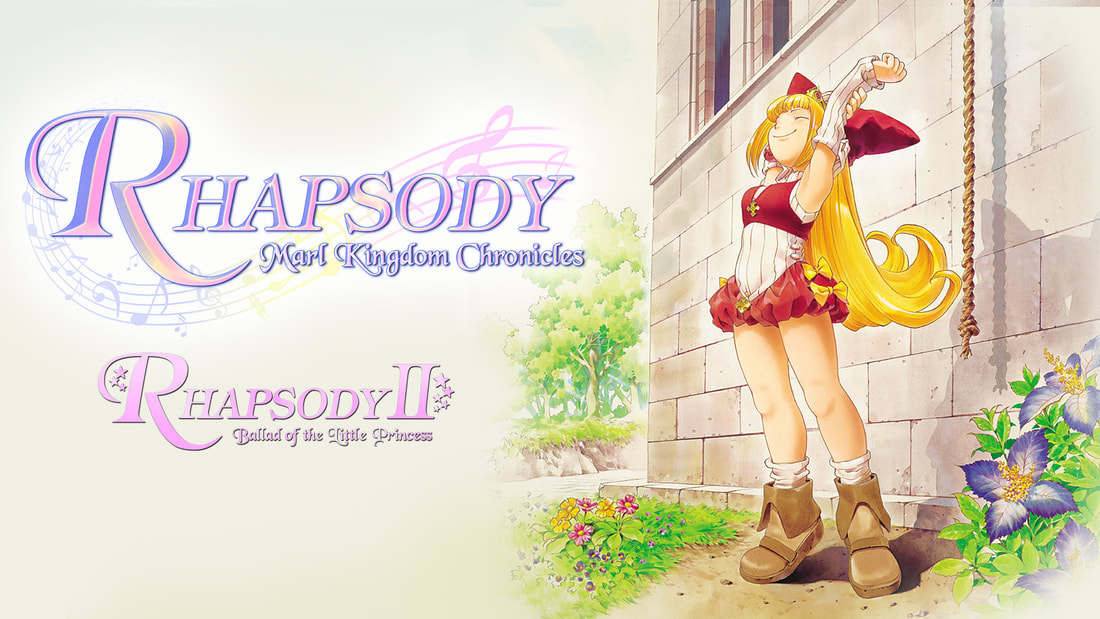
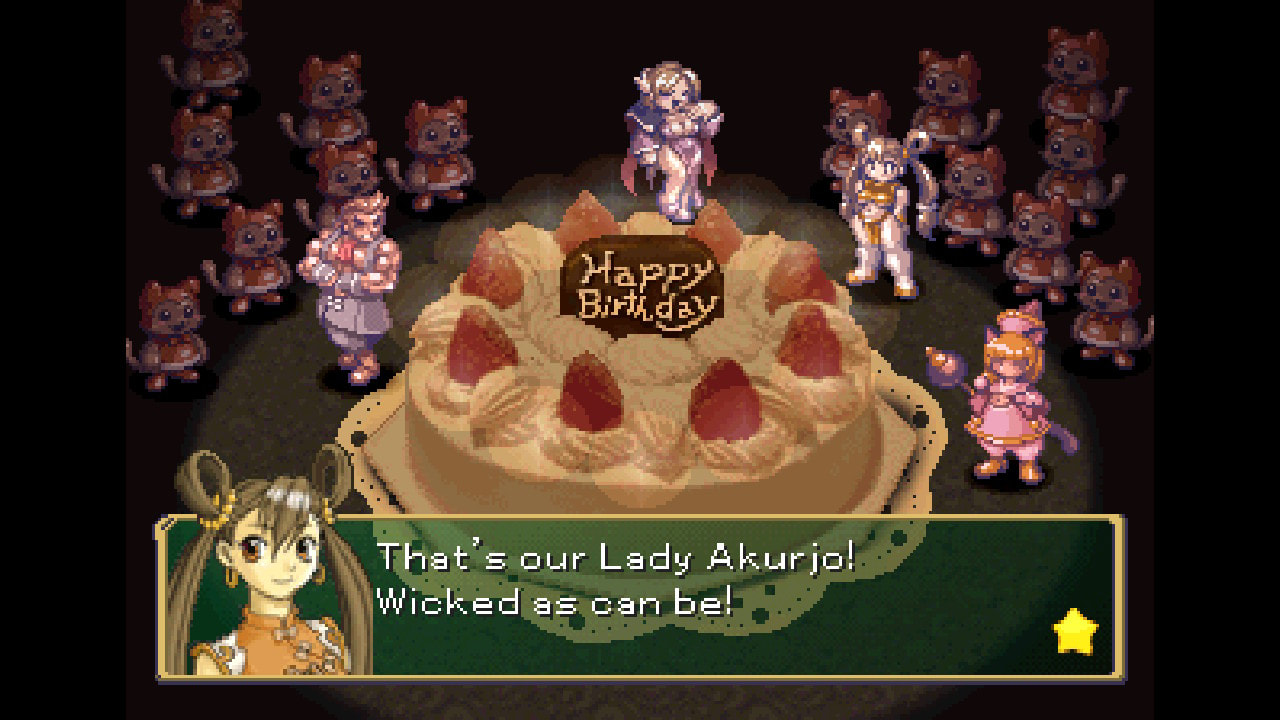
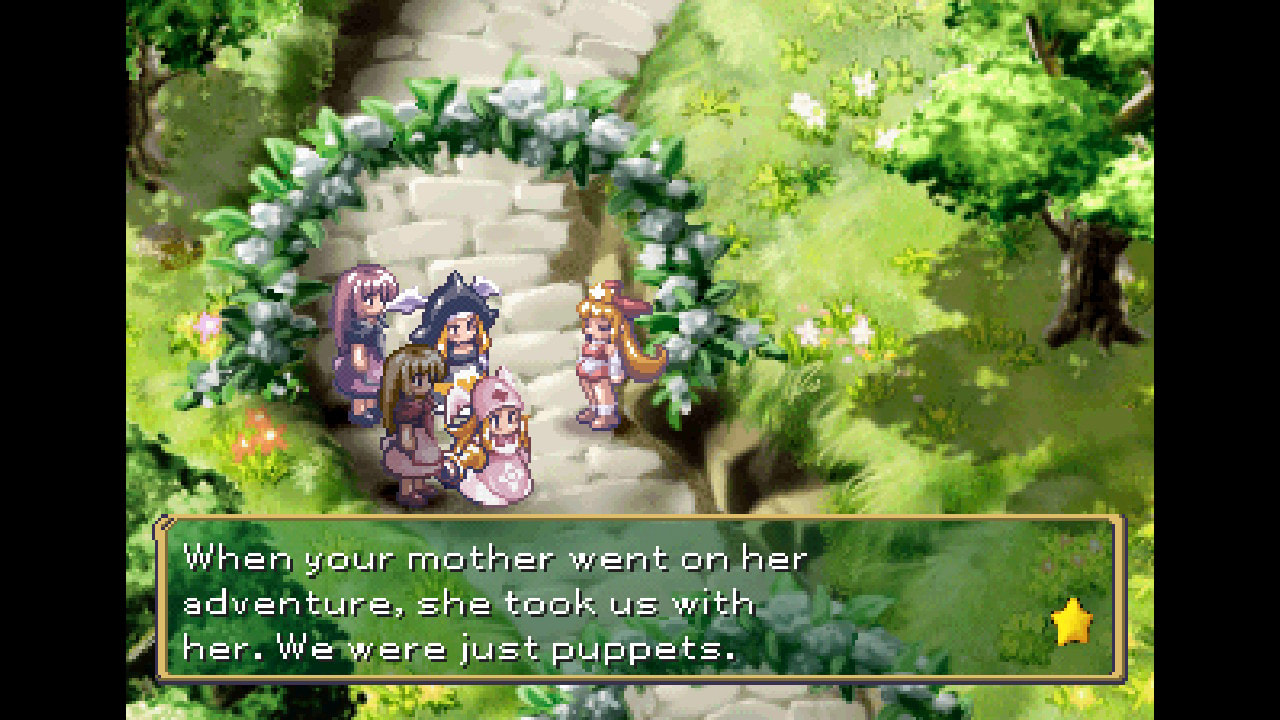
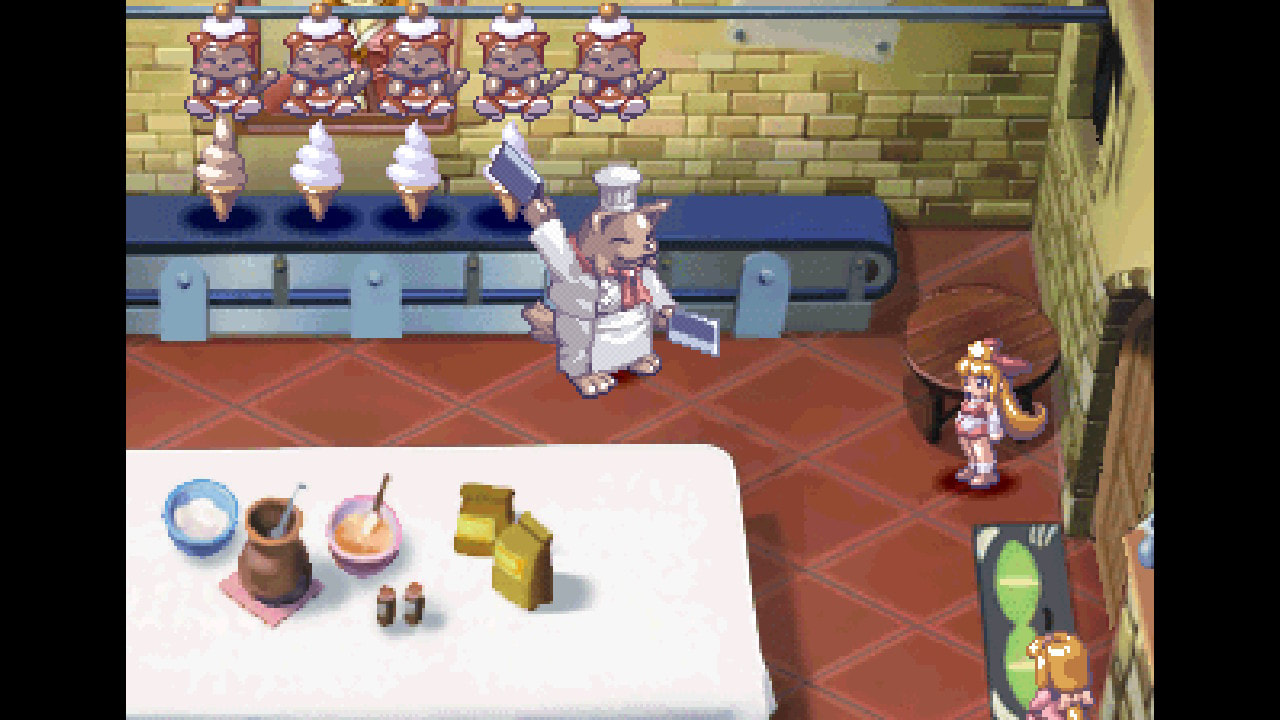


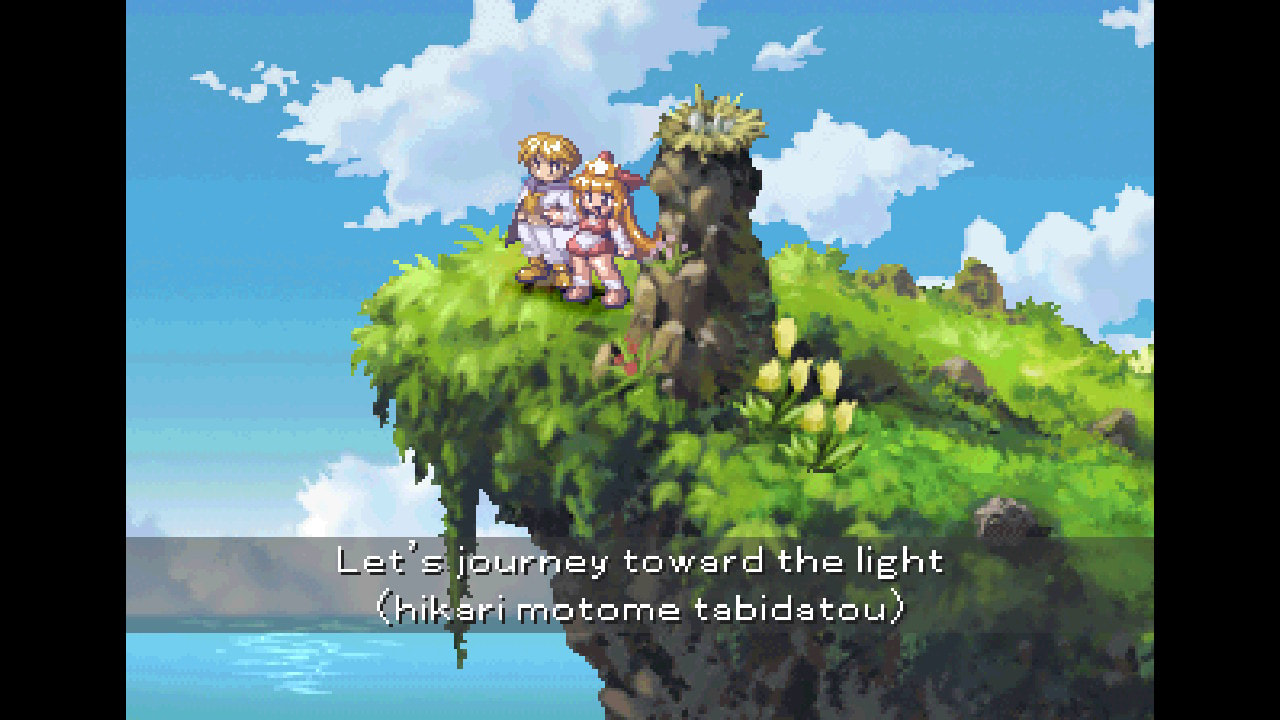


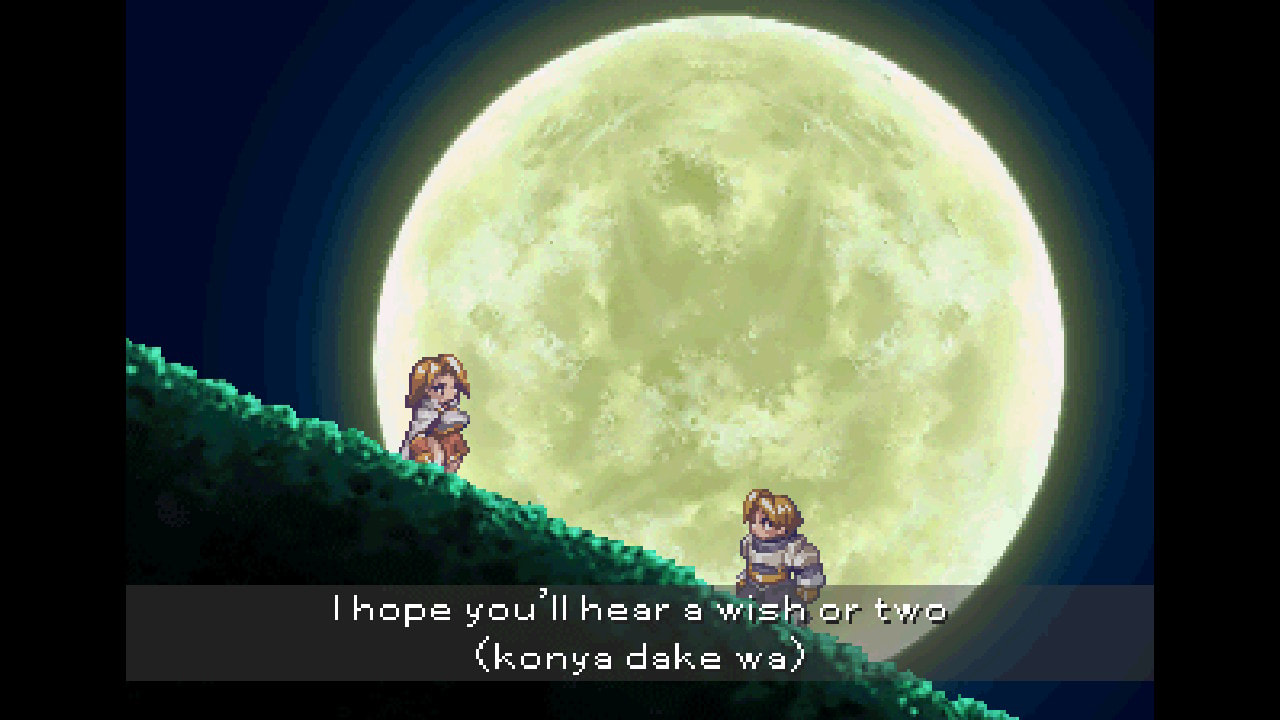
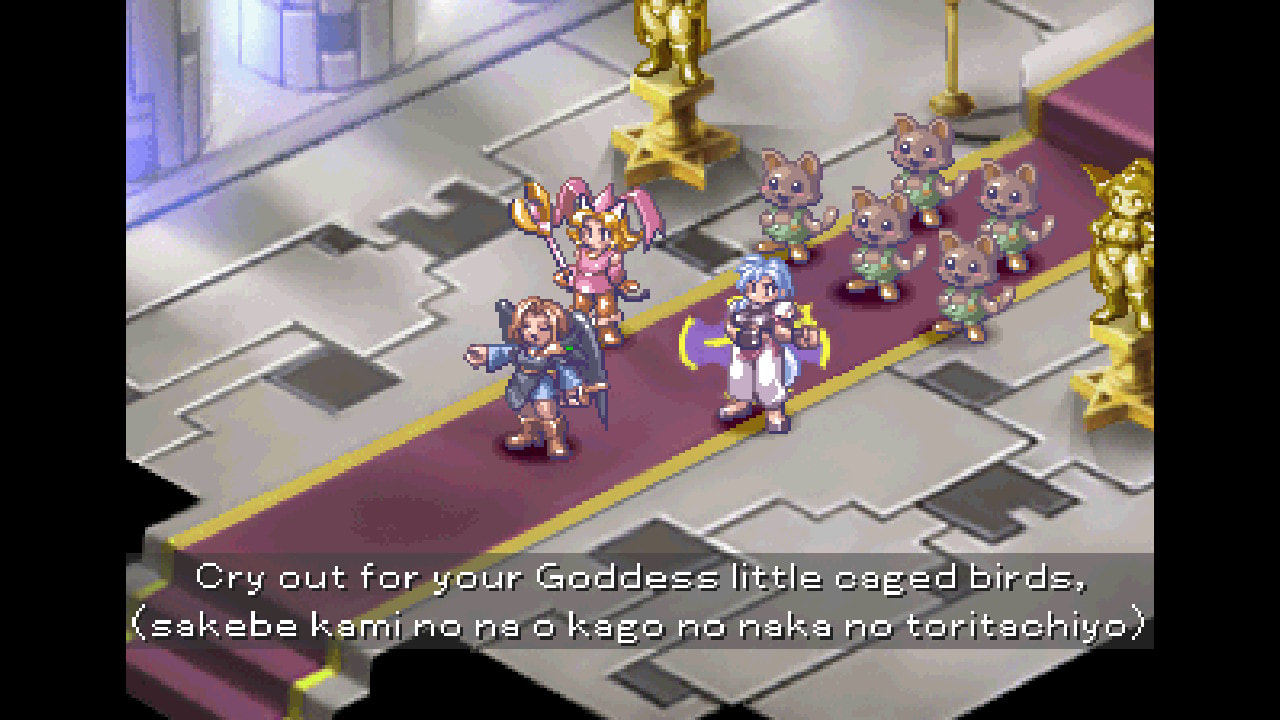
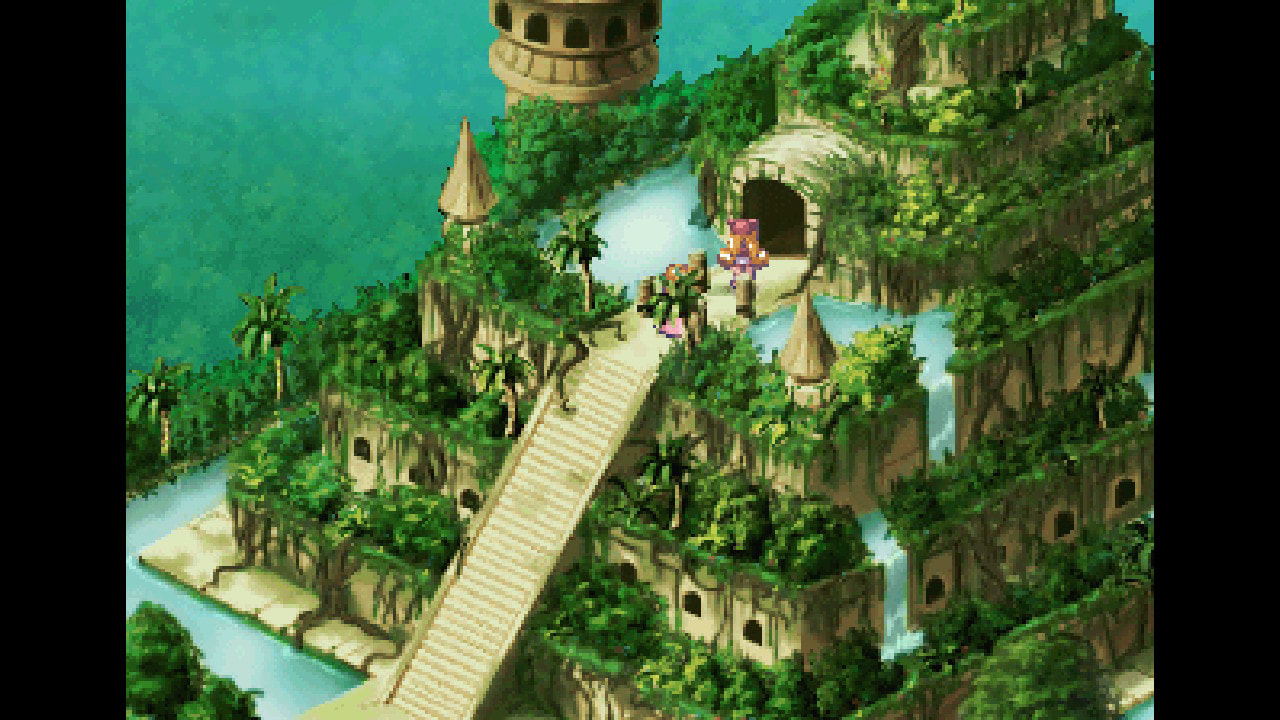

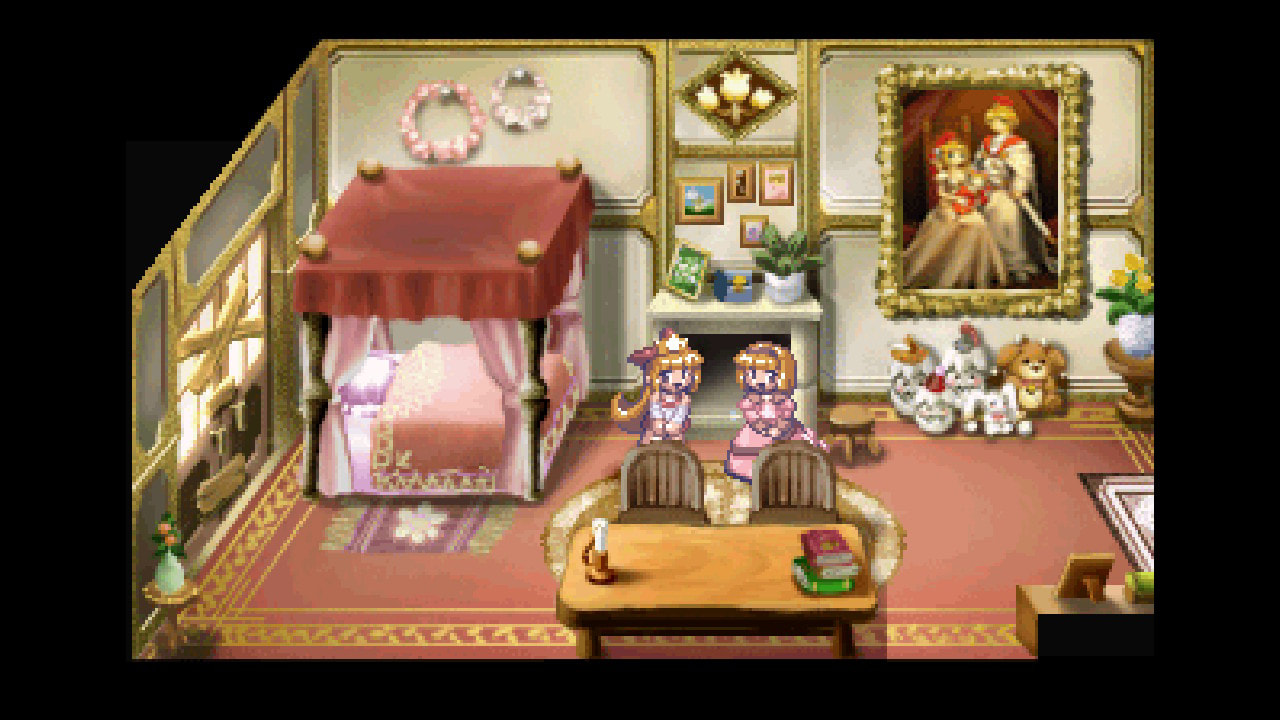
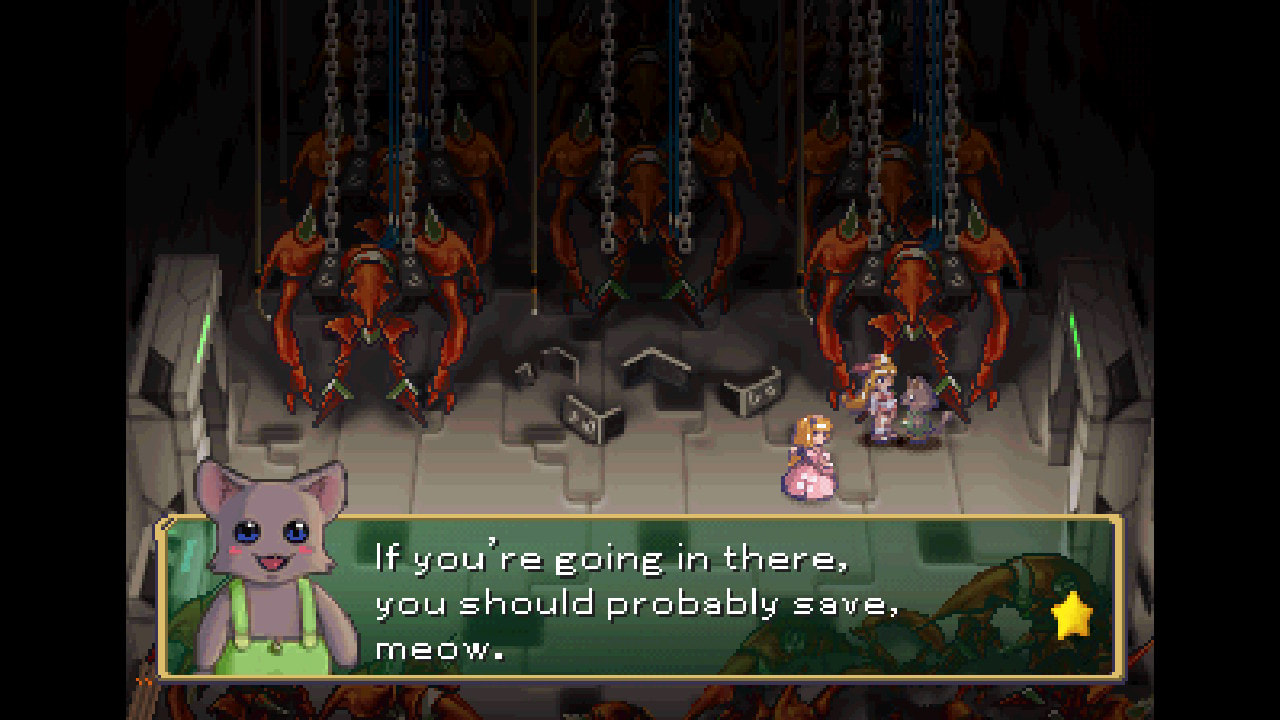




 RSS Feed
RSS Feed